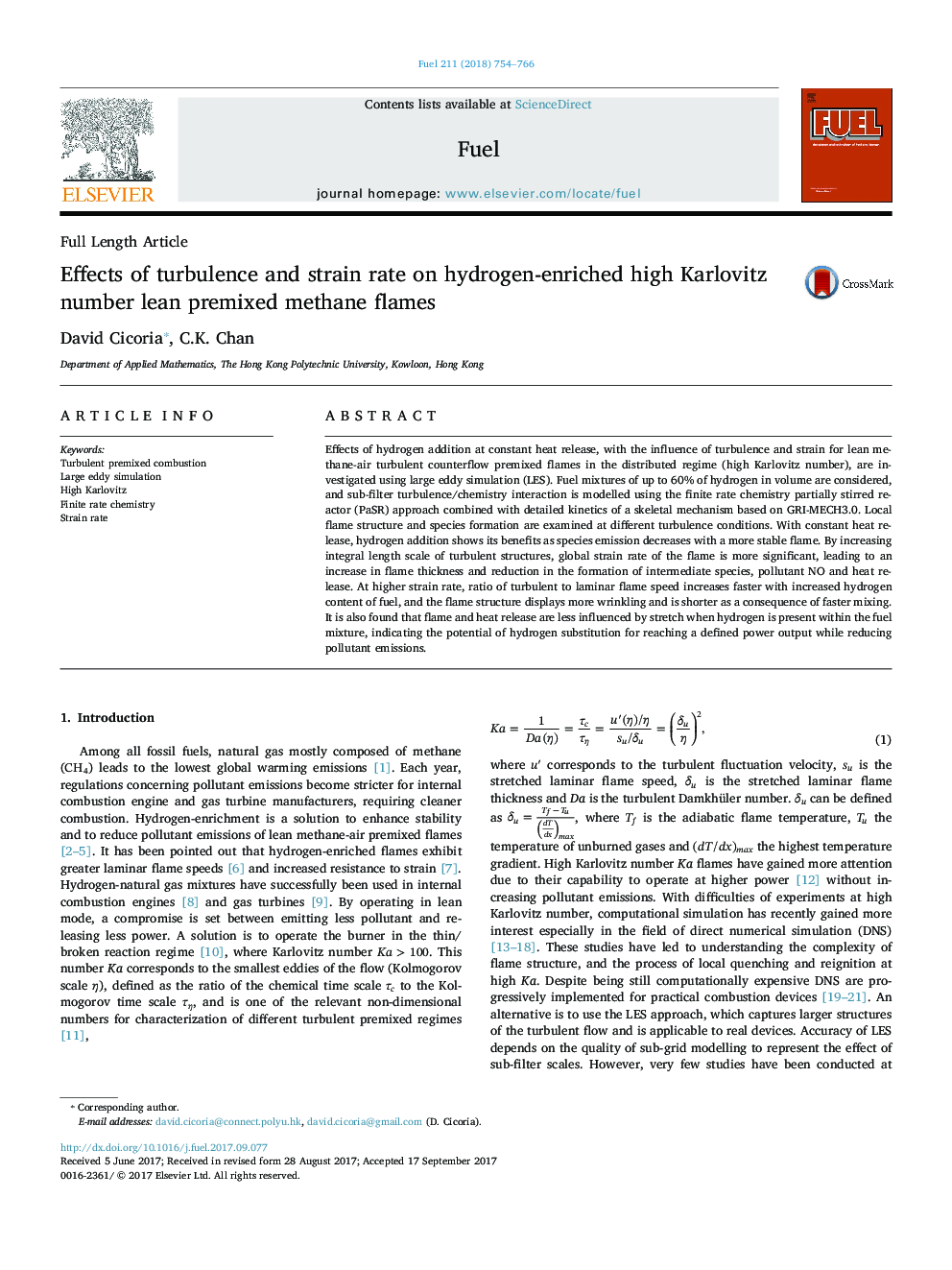| Article ID | Journal | Published Year | Pages | File Type |
|---|---|---|---|---|
| 6473606 | Fuel | 2018 | 13 Pages |
Effects of hydrogen addition at constant heat release, with the influence of turbulence and strain for lean methane-air turbulent counterflow premixed flames in the distributed regime (high Karlovitz number), are investigated using large eddy simulation (LES). Fuel mixtures of up to 60% of hydrogen in volume are considered, and sub-filter turbulence/chemistry interaction is modelled using the finite rate chemistry partially stirred reactor (PaSR) approach combined with detailed kinetics of a skeletal mechanism based on GRI-MECH3.0. Local flame structure and species formation are examined at different turbulence conditions. With constant heat release, hydrogen addition shows its benefits as species emission decreases with a more stable flame. By increasing integral length scale of turbulent structures, global strain rate of the flame is more significant, leading to an increase in flame thickness and reduction in the formation of intermediate species, pollutant NO and heat release. At higher strain rate, ratio of turbulent to laminar flame speed increases faster with increased hydrogen content of fuel, and the flame structure displays more wrinkling and is shorter as a consequence of faster mixing. It is also found that flame and heat release are less influenced by stretch when hydrogen is present within the fuel mixture, indicating the potential of hydrogen substitution for reaching a defined power output while reducing pollutant emissions.
